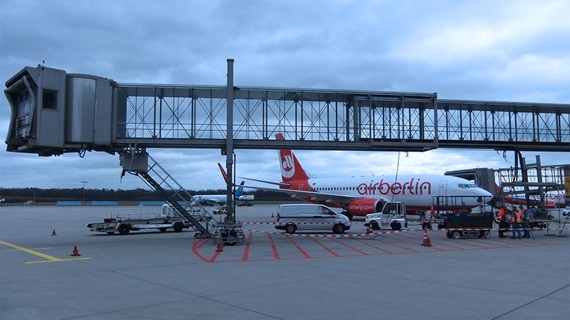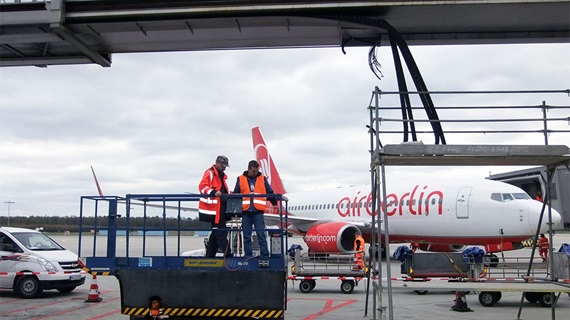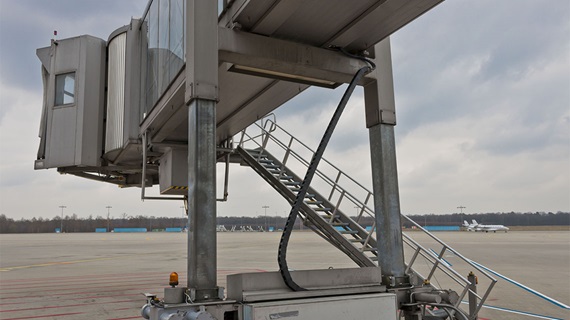|
3.0150 [ms]
|
SELECT option_value FROM maR_options WHERE option_name = 'nfd_plugins_compat_check_conflicts' LIMIT 1;
|
|
0.4880 [ms]
|
SELECT option_value FROM maR_options WHERE option_name = 'newfold_burst_safety_mode' LIMIT 1;
|
|
1.0030 [ms]
|
SELECT option_value FROM maR_options WHERE option_name = 'mm_brand' LIMIT 1;
|
|
0.6299 [ms]
|
SELECT option_value FROM maR_options WHERE option_name = 'nfd_module_activation_fresh_install' LIMIT 1;
|
|
0.2770 [ms]
|
SELECT option_value FROM maR_options WHERE option_name = 'ce4wp_activation_redirect' LIMIT 1;
|
|
0.1550 [ms]
|
SELECT autoload FROM maR_options WHERE option_name = 'optin_monster_api_activation_redirect_disabled' LIMIT 1;
|
|
0.5920 [ms]
|
SHOW FULL COLUMNS FROM `maR_options`;
|
|
0.3090 [ms]
|
UPDATE `maR_options` SET `option_value` = '1' WHERE `option_name` = 'optin_monster_api_activation_redirect_disabled';
|
|
0.1810 [ms]
|
SELECT autoload FROM maR_options WHERE option_name = 'wpforms_activation_redirect' LIMIT 1;
|
|
0.1941 [ms]
|
UPDATE `maR_options` SET `option_value` = '1' WHERE `option_name` = 'wpforms_activation_redirect';
|
|
0.2398 [ms]
|
SELECT option_value FROM maR_options WHERE option_name = 'fs_storage_logger' LIMIT 1;
|
|
0.1180 [ms]
|
SELECT option_value FROM maR_options WHERE option_name = 'fs_clone_management' LIMIT 1;
|
|
0.0939 [ms]
|
SELECT option_value FROM maR_options WHERE option_name = 'fs_cache_6189' LIMIT 1;
|
|
0.5040 [ms]
|
SELECT option_value FROM maR_options WHERE option_name = 'wpda_mail_server' LIMIT 1;
|
|
0.3431 [ms]
|
SELECT option_value FROM maR_options WHERE option_name = 'crontrol_schedules' LIMIT 1;
|
|
0.2341 [ms]
|
SELECT option_value FROM maR_options WHERE option_name = 'jetpack_offline_mode' LIMIT 1;
|
|
0.3631 [ms]
|
SELECT option_value FROM maR_options WHERE option_name = 'as_has_wp_comment_logs' LIMIT 1;
|
|
1.3490 [ms]
|
SELECT * FROM maR_users WHERE ID = '1' LIMIT 1;
|
|
1.3509 [ms]
|
SELECT user_id, meta_key, meta_value FROM maR_usermeta WHERE user_id IN (1) ORDER BY umeta_id ASC;
|
|
0.2241 [ms]
|
SELECT option_value FROM maR_options WHERE option_name = 'jetpack_sync_error_idc' LIMIT 1;
|
|
0.2370 [ms]
|
SELECT option_value FROM maR_options WHERE option_name = 'WPLANG' LIMIT 1;
|
|
1.4191 [ms]
|
SELECT maR_posts.ID
FROM maR_posts
WHERE 1=1 AND maR_posts.post_type IN ('page', 'post') AND ((maR_posts.post_status <> 'trash' AND maR_posts.post_status <> 'auto-draft'))
ORDER BY maR_posts.ID ASC
LIMIT 0, 1;
|
|
0.1979 [ms]
|
SELECT maR_posts.* FROM maR_posts WHERE ID IN (1);
|
|
0.9151 [ms]
|
SELECT post_id, meta_key, meta_value FROM maR_postmeta WHERE post_id IN (1) ORDER BY meta_id ASC;
|
|
2.4540 [ms]
|
SELECT DISTINCT t.term_id, tr.object_id
FROM maR_terms AS t INNER JOIN maR_term_taxonomy AS tt ON t.term_id = tt.term_id INNER JOIN maR_term_relationships AS tr ON tr.term_taxonomy_id =
tt.term_taxonomy_id
WHERE tt.taxonomy IN ('category', 'post_tag', 'post_format') AND tr.object_id IN (1)
ORDER BY t.name ASC
;
|
|
0.2661 [ms]
|
SELECT t.*, tt.* FROM maR_terms AS t INNER JOIN maR_term_taxonomy AS tt ON t.term_id = tt.term_id WHERE t.term_id IN (1);
|
|
0.2799 [ms]
|
SELECT maR_posts.ID
FROM maR_posts
WHERE 1=1 AND maR_posts.post_type IN ('page', 'post') AND ((maR_posts.post_status <> 'trash' AND maR_posts.post_status <> 'auto-draft'))
ORDER BY maR_posts.ID DESC
LIMIT 0, 1;
|
|
0.2129 [ms]
|
SELECT maR_posts.* FROM maR_posts WHERE ID IN (8550);
|
|
0.1938 [ms]
|
SELECT post_id, meta_key, meta_value FROM maR_postmeta WHERE post_id IN (8550) ORDER BY meta_id ASC;
|
|
0.4060 [ms]
|
SELECT DISTINCT t.term_id, tr.object_id
FROM maR_terms AS t INNER JOIN maR_term_taxonomy AS tt ON t.term_id = tt.term_id INNER JOIN maR_term_relationships AS tr ON tr.term_taxonomy_id =
tt.term_taxonomy_id
WHERE tt.taxonomy IN ('category', 'post_tag', 'post_format') AND tr.object_id IN (8550)
ORDER BY t.name ASC
;
|
|
0.2081 [ms]
|
SELECT t.*, tt.* FROM maR_terms AS t INNER JOIN maR_term_taxonomy AS tt ON t.term_id = tt.term_id WHERE t.term_id IN (81);
|
|
0.2789 [ms]
|
SELECT option_value FROM maR_options WHERE option_name = 'fresh_site' LIMIT 1;
|
|
0.2899 [ms]
|
SELECT option_value FROM maR_options WHERE option_name = 'wpforms_square_connections' LIMIT 1;
|
|
0.2611 [ms]
|
SELECT option_value FROM maR_options WHERE option_name = 'jetpack_sync_non_blocking' LIMIT 1;
|
|
0.2930 [ms]
|
SELECT option_name, option_value FROM maR_options WHERE option_name IN
('_transient_jetpack_connection_active_plugins_refresh','_transient_timeout_jetpack_connection_active_plugins_refresh');
|
|
0.2921 [ms]
|
SELECT option_value FROM maR_options WHERE option_name = 'jetpack_excluded_extensions' LIMIT 1;
|
|
0.3841 [ms]
|
SELECT option_name, option_value FROM maR_options WHERE option_name IN
('_transient_nfd_module_onboarding_activate_param','_transient_timeout_nfd_module_onboarding_activate_param');
|
|
0.3269 [ms]
|
SELECT option_value FROM maR_options WHERE option_name = 'nfd_module_installer_plugin_install_queue' LIMIT 1;
|
|
0.1600 [ms]
|
SELECT option_value FROM maR_options WHERE option_name = 'nfd_module_installer_plugin_uninstall_queue' LIMIT 1;
|
|
0.2451 [ms]
|
SELECT option_value FROM maR_options WHERE option_name = 'nfd_module_installer_theme_install_queue' LIMIT 1;
|
|
0.3071 [ms]
|
SELECT option_value FROM maR_options WHERE option_name = 'nfd_module_installer_plugin_activation_queue' LIMIT 1;
|
|
0.1571 [ms]
|
SELECT option_value FROM maR_options WHERE option_name = 'nfd_module_installer_plugin_deactivation_queue' LIMIT 1;
|
|
0.3650 [ms]
|
SELECT option_name, option_value FROM maR_options WHERE option_name IN
('_site_transient_wp_theme_files_patterns-83fdf9a8b8b2c16ee084952b2533e8cf','_site_transient_timeout_wp_theme_files_patterns-83fdf9a8b8b2c16ee084952b2533e8cf');
|
|
0.1311 [ms]
|
SELECT autoload FROM maR_options WHERE option_name = '_site_transient_wp_theme_files_patterns-83fdf9a8b8b2c16ee084952b2533e8cf';
|
|
0.2680 [ms]
|
DELETE FROM `maR_options` WHERE `option_name` = '_site_transient_wp_theme_files_patterns-83fdf9a8b8b2c16ee084952b2533e8cf';
|
|
0.1190 [ms]
|
SELECT autoload FROM maR_options WHERE option_name = '_site_transient_timeout_wp_theme_files_patterns-83fdf9a8b8b2c16ee084952b2533e8cf';
|
|
0.1740 [ms]
|
DELETE FROM `maR_options` WHERE `option_name` = '_site_transient_timeout_wp_theme_files_patterns-83fdf9a8b8b2c16ee084952b2533e8cf';
|
|
0.1891 [ms]
|
INSERT INTO `maR_options` (`option_name`, `option_value`, `autoload`) VALUES
('_site_transient_timeout_wp_theme_files_patterns-83fdf9a8b8b2c16ee084952b2533e8cf', '1749197334', 'off') ON DUPLICATE KEY UPDATE `option_name` =
VALUES(`option_name`), `option_value` = VALUES(`option_value`), `autoload` = VALUES(`autoload`);
|
|
0.1419 [ms]
|
INSERT INTO `maR_options` (`option_name`, `option_value`, `autoload`) VALUES
('_site_transient_wp_theme_files_patterns-83fdf9a8b8b2c16ee084952b2533e8cf', 'a:2:{s:7:\"version\";s:6:\"1.0.01\";s:8:\"patterns\";a:0:{}}', 'off') ON
DUPLICATE KEY UPDATE `option_name` = VALUES(`option_name`), `option_value` = VALUES(`option_value`), `autoload` = VALUES(`autoload`);
|
|
0.2019 [ms]
|
SELECT option_name, option_value FROM maR_options WHERE option_name IN ('_transient_wpc_filters_query','_transient_timeout_wpc_filters_query');
|
|
3.7110 [ms]
|
SELECT a.hook FROM maR_actionscheduler_actions a
JOIN maR_actionscheduler_groups g ON g.group_id = a.group_id
WHERE g.slug = 'wpforms' AND a.status IN ( 'in-progress', 'pending' );
|
|
0.4961 [ms]
|
SELECT a.action_id FROM maR_actionscheduler_actions a WHERE 1=1 AND a.hook='wpforms_process_entry_emails_meta_cleanup' AND a.status IN ('in-progress',
'pending') LIMIT 0, 1;
|
|
0.2849 [ms]
|
SELECT option_value FROM maR_options WHERE option_name = 'monsterinsights_popular_posts_theme_settings' LIMIT 1;
|
|
0.2689 [ms]
|
SELECT option_value FROM maR_options WHERE option_name = 'jetpack_portfolio' LIMIT 1;
|
|
0.3510 [ms]
|
SELECT option_name, option_value FROM maR_options WHERE option_name IN ('_transient_nfd_plugin_activated','_transient_timeout_nfd_plugin_activated');
|
|
0.3359 [ms]
|
SELECT option_name, option_value FROM maR_options WHERE option_name IN ('_transient_doing_cron','_transient_timeout_doing_cron');
|
|
0.3970 [ms]
|
INSERT INTO `maR_options` (`option_name`, `option_value`, `autoload`) VALUES ('_transient_doing_cron', '1749195534.4972751140594482421875', 'on') ON
DUPLICATE KEY UPDATE `option_name` = VALUES(`option_name`), `option_value` = VALUES(`option_value`), `autoload` = VALUES(`autoload`);
|
|
0.6931 [ms]
|
SELECT option_value FROM maR_options WHERE option_name = 'wpc_filter_permalinks' LIMIT 1;
|
|
0.2351 [ms]
|
SELECT * FROM maR_posts WHERE ID = 7386 LIMIT 1;
|
|
0.2041 [ms]
|
SELECT maR_posts.*
FROM maR_posts
WHERE 1=1 AND maR_posts.ID = 7386 AND maR_posts.post_type = 'post'
ORDER BY maR_posts.post_date DESC
;
|
|
0.5500 [ms]
|
SELECT DISTINCT t.term_id, tr.object_id
FROM maR_terms AS t INNER JOIN maR_term_taxonomy AS tt ON t.term_id = tt.term_id INNER JOIN maR_term_relationships AS tr ON tr.term_taxonomy_id =
tt.term_taxonomy_id
WHERE tt.taxonomy IN ('category', 'post_tag', 'post_format') AND tr.object_id IN (7386)
ORDER BY t.name ASC
;
|
|
0.2580 [ms]
|
SELECT t.*, tt.* FROM maR_terms AS t INNER JOIN maR_term_taxonomy AS tt ON t.term_id = tt.term_id WHERE t.term_id IN (34,18);
|
|
0.2089 [ms]
|
SELECT post_id, meta_key, meta_value FROM maR_postmeta WHERE post_id IN (7386) ORDER BY meta_id ASC;
|
|
0.1988 [ms]
|
SELECT option_value FROM maR_options WHERE option_name = 'monsterinsights_site_profile' LIMIT 1;
|
|
0.1020 [ms]
|
SELECT option_value FROM maR_options WHERE option_name = 'monsterinsights_network_profile' LIMIT 1;
|
|
0.9148 [ms]
|
SELECT t.*, tt.* FROM maR_terms AS t INNER JOIN maR_term_taxonomy AS tt ON t.term_id = tt.term_id WHERE t.term_id = 7386;
|
|
0.3810 [ms]
|
SELECT autoload FROM maR_options WHERE option_name = 'nfd_utilities_last_refresh_time' LIMIT 1;
|
|
0.3979 [ms]
|
UPDATE `maR_options` SET `option_value` = '1749195534' WHERE `option_name` = 'nfd_utilities_last_refresh_time';
|
|
0.2251 [ms]
|
SELECT option_value FROM maR_options WHERE option_name = 'nfd_link_prefetch_settings' LIMIT 1;
|
|
0.9539 [ms]
|
SELECT t.term_id
FROM maR_terms AS t INNER JOIN maR_term_taxonomy AS tt ON t.term_id = tt.term_id
WHERE tt.taxonomy IN ('category') AND t.term_id NOT IN (1)
;
|
|
1.4510 [ms]
|
SELECT t.*, tt.* FROM maR_terms AS t INNER JOIN maR_term_taxonomy AS tt ON t.term_id = tt.term_id WHERE t.term_id IN
(5,6,7,8,9,10,11,12,13,14,15,16,17,19,20,21,22,23,24,25,26,27,28,29,30,31,32,33,35,36,37,38,39,40,41,42,43,44,45,46,47,48,49,50,51,52,53,54,55,56,57,58,59,60,61,62,63,64,65,66,67,68,69,70,71,72,73,74,75,76,77,78,79,80,82,83,84,85,86,87,88,89);
|
|
0.7770 [ms]
|
SELECT meta_id FROM maR_postmeta WHERE meta_key = 'PostView_views' AND post_id = 7386;
|
|
0.7360 [ms]
|
SHOW FULL COLUMNS FROM `maR_postmeta`;
|
|
0.4201 [ms]
|
UPDATE `maR_postmeta` SET `meta_value` = '89' WHERE `post_id` = 7386 AND `meta_key` = 'PostView_views';
|
|
0.2990 [ms]
|
SELECT option_value FROM maR_options WHERE option_name = 'theme_mods_IgusToolbox' LIMIT 1;
|
|
0.1719 [ms]
|
SELECT option_value FROM maR_options WHERE option_name = 'https_migration_required' LIMIT 1;
|
|
2.0530 [ms]
|
SELECT t.term_id
FROM maR_terms AS t INNER JOIN maR_term_taxonomy AS tt ON t.term_id = tt.term_id
WHERE tt.taxonomy IN ('category')
ORDER BY t.name ASC
;
|
|
0.4690 [ms]
|
SELECT user_id, meta_key, meta_value FROM maR_usermeta WHERE user_id IN (3) ORDER BY umeta_id ASC;
|
|
0.2241 [ms]
|
SELECT * FROM maR_users WHERE ID IN (3);
|
|
0.4890 [ms]
|
SELECT post_id, meta_key, meta_value FROM maR_postmeta WHERE post_id IN (7386) ORDER BY meta_id ASC;
|
|
0.3729 [ms]
|
SELECT * FROM maR_posts WHERE ID = 7388 LIMIT 1;
|
|
0.8709 [ms]
|
SELECT t.term_id
FROM maR_terms AS t INNER JOIN maR_term_taxonomy AS tt ON t.term_id = tt.term_id
WHERE tt.taxonomy IN ('category') AND t.term_id IN ( 34 )
;
|
|
4.6120 [ms]
|
SELECT SQL_CALC_FOUND_ROWS maR_posts.ID
FROM maR_posts LEFT JOIN maR_term_relationships ON (maR_posts.ID = maR_term_relationships.object_id)
WHERE 1=1 AND (
maR_term_relationships.term_taxonomy_id IN (34)
) AND ((maR_posts.post_type = 'post' AND (maR_posts.post_status = 'publish')))
GROUP BY maR_posts.ID
ORDER BY maR_posts.post_date DESC
LIMIT 0, 3;
|
|
0.1211 [ms]
|
SELECT FOUND_ROWS();
|
|
0.2902 [ms]
|
SELECT maR_posts.* FROM maR_posts WHERE ID IN (3506,3833);
|
|
2.1169 [ms]
|
SELECT post_id, meta_key, meta_value FROM maR_postmeta WHERE post_id IN (3506,3833) ORDER BY meta_id ASC;
|
|
1.7271 [ms]
|
SELECT DISTINCT t.term_id, tr.object_id
FROM maR_terms AS t INNER JOIN maR_term_taxonomy AS tt ON t.term_id = tt.term_id INNER JOIN maR_term_relationships AS tr ON tr.term_taxonomy_id =
tt.term_taxonomy_id
WHERE tt.taxonomy IN ('category', 'post_tag', 'post_format') AND tr.object_id IN (3506, 3833)
ORDER BY t.name ASC
;
|
|
0.3779 [ms]
|
SELECT user_id, meta_key, meta_value FROM maR_usermeta WHERE user_id IN (2) ORDER BY umeta_id ASC;
|
|
0.2320 [ms]
|
SELECT * FROM maR_users WHERE ID IN (2);
|
|
0.2651 [ms]
|
SELECT * FROM maR_posts WHERE ID = 7388 LIMIT 1;
|
|
0.2191 [ms]
|
SELECT * FROM maR_posts WHERE ID = 7388 LIMIT 1;
|
|
0.5121 [ms]
|
SELECT * FROM maR_posts WHERE ID = 7388 LIMIT 1;
|
|
0.2398 [ms]
|
SELECT post_id, meta_key, meta_value FROM maR_postmeta WHERE post_id IN (7388) ORDER BY meta_id ASC;
|
|
1.1151 [ms]
|
SELECT * FROM maR_posts WHERE ID = 5188 LIMIT 1;
|
|
0.2460 [ms]
|
SELECT * FROM maR_posts WHERE ID = 5188 LIMIT 1;
|
|
0.1941 [ms]
|
SELECT * FROM maR_posts WHERE ID = 5188 LIMIT 1;
|
|
0.7050 [ms]
|
SELECT post_id, meta_key, meta_value FROM maR_postmeta WHERE post_id IN (5188) ORDER BY meta_id ASC;
|




